Astronautics 2016 on Geektimes, part 1
2016 is coming to an end. Let 's traditionally recall what events occurred in the space program, what ups, what falls, what we discussed and what were worried about at Geektimes.
On January 2, three 45-pound metal balls fell on Vietnam. The media blamed Russia first: according to Thanh Nien, the balls could be part of a rocket or spacecraft. On the balls themselves there were no identifying marks.
In Namibia a few years ago was a similar case. Then fell 6-pound ball with a diameter of 35 centimeters.
')
Perhaps this is space debris from orbit. Or fuel tanks?
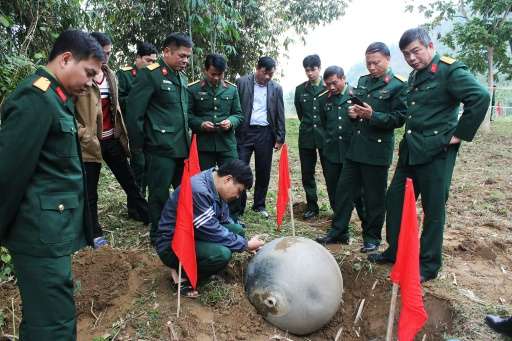
2016 started well for the UK space program. The second in the history of this country's astronaut visited space. On January 15, 43-year-old Tim Peak and a colleague from the United States spent 6.5 hours in open space, replacing a faulty DC switching unit at the International Space Station. Before opening the airlock, Peak said: “This is so great. This is a moment of pride. ”
Astronaut Tim Peak spent 186 days in orbit - from December 15, 2015 to June 18, 2016. And he was unlucky all the time with calls to his relatives.
Keep a selfie from Tim Peak from outer space.
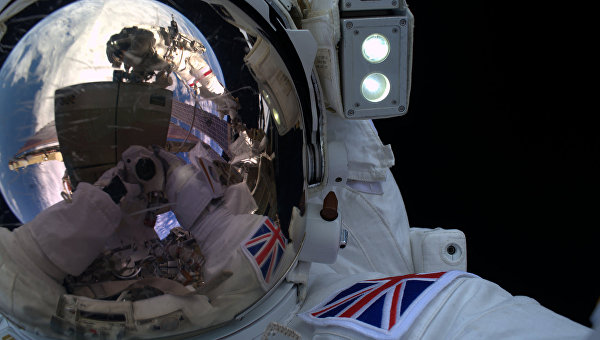

More Tim Peak showed how to drink instant coffee on the ISS.
At the end of 2015, SpaceX managed to return the first stage of the Falcon 9 launch vehicle to the Earth in a state that allows it to be used a second time, as Ilon Mask assured. But to land is not as interesting as landing a platform on an offshore platform.
In January, this was not possible . The rocket was launched, and they were able to plant it - but with damages, one of the supports broke, which caused the stage to fall and explode.
You yourself can try to land Falcon 9 on the sea platform in this game .
Video landing and fall January 17:
But Ilon Musk did not stop at failure. There were a few more launches, including the launch into orbit of the Thaicom 8 satellite , followed by the landing of the first stage on the deck of the floating spaceport Of Course I Still Love You.

Then from an unexpected angle, an amateur photographer accidentally shot the return of Falcon 9.
In September, the SpaceX Falcon 9 rocket exploded on the launch pad. And we tried to understand why this happened.

Continued his journey with Ceres probe Dawn. On July 1, 2016, NASA decided not to send a probe further to the asteroid Adeon . The main mission at that time was completed, but the probe also did not break on the surface of the planetoid Ceres.
Read the mission details and watch a video of the Dawn probe flying above the Ceres planetoid, made up of high-resolution photos. Color roller - planetoid shown after processing in a graphic editor. On the video you can look at large craters and mountains. Photos for the video were taken at an altitude of 1,450 kilometers from the surface from August to October 2015.
By March 2016, the probe had investigated Ceres for a year .
Another spacecraft that gave scientists a mass of materials for research - New Horizons. In January 2016, thanks to the apparatus , water ice was found on the surface of Pluto. Below you see a NASA map that shows the placement of ice on the surface of the planet.
A few months later, experts, studying the relationship of Pluto and Charon, made the assumption that there could be a liquid ocean beneath the ice.
This link provides even more detailed photos of Pluto, and here is a snapshot of a cryovolcano.
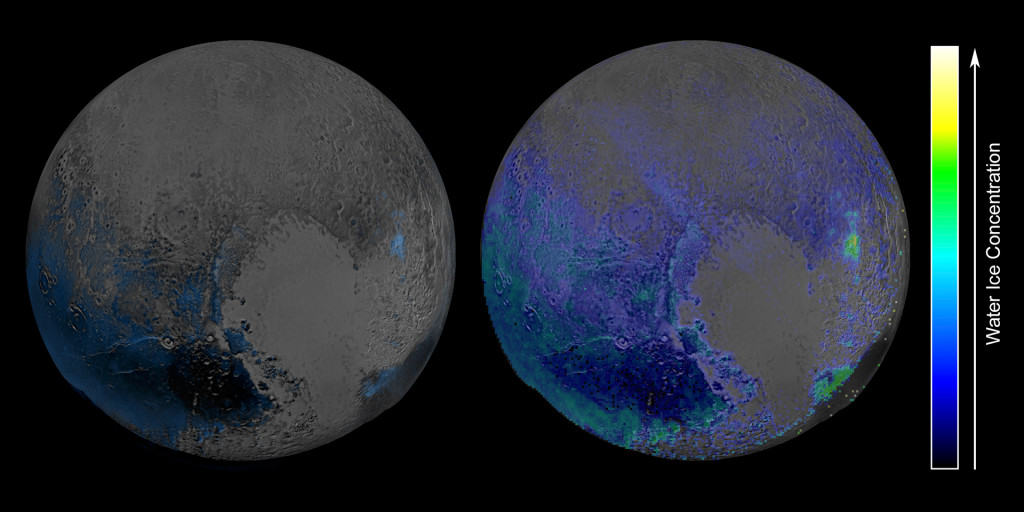
On January 20, the Soyuz 2.1a rocket was unpacked at the Vostochny cosmodrome. For launch from the Vostochny launch site, the launch vehicle was finalized. On April 28, 2016, Soyuz-2.1a successfully launched three satellites into orbit.
Great photos are on this link .

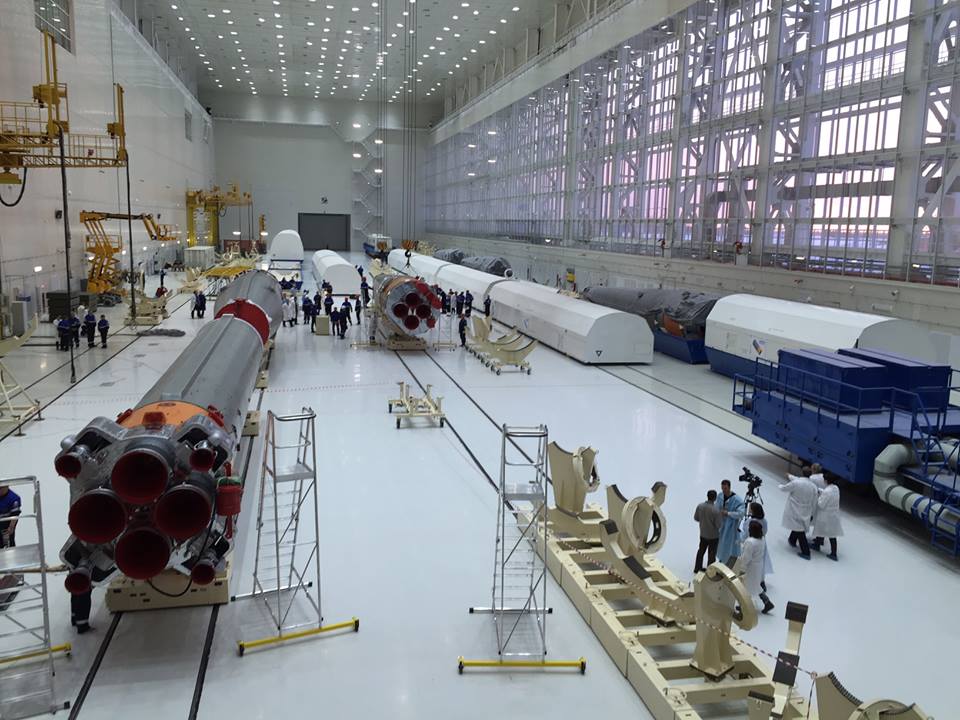
Since 2012, NASA has been paying SpaceX for delivering cargo to the International Space Station. In the future, Dragon will begin to send people into orbit, but this requires a lot of tests. The company Ilona Mask successfully tested parachutes for a manned capsule, as well as the SuperDraco system for a soft landing of the capsule.
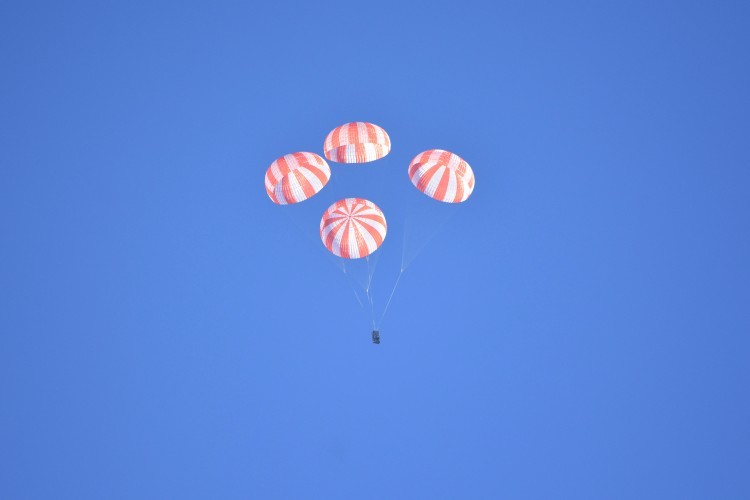
Blue Origin, which belongs to Amazon founder Jeff Bezos, tried to keep up with SpaceX and, on January 22, re-launched the New Shepard suborbital carrier. The device rose to 101.7 kilometers, which is more than a kilometer above the previous result. New Shepard raised a suborbital ship, which Blue Origin is developing for space tourism.
The most interesting thing is that in this case the rocket was really reusable. Later, Blue Origin specialists modeled the accident in order to find out whether the emergency evacuation system for the crew and passengers would work, and also to test for a parachute failure .
And here you can read and look at the excursion in Blue Origin.
In April, the reusable ship Blue Origin took off for the third time and sat down.
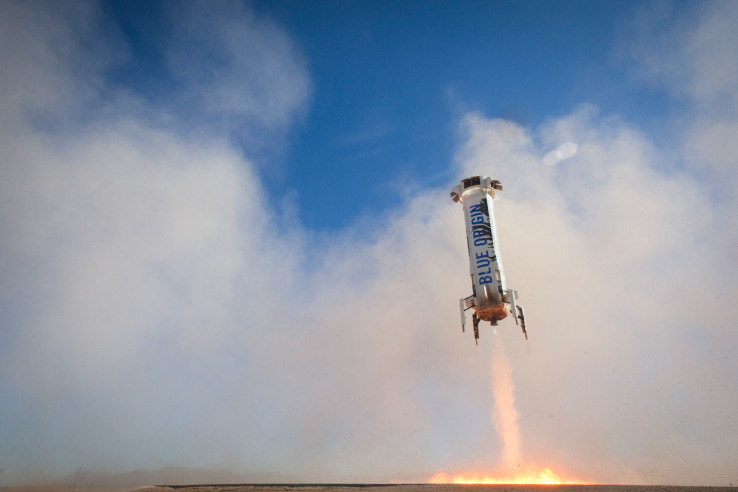
Hubble has already given us an incredible amount of beautiful photos, and scientists - data for space exploration. Below is a photo of the cluster-like Trumpler 14 cluster, which contains some of the brightest stars in the Milky Way. Blue and white stars in several million years will turn into supernovae.
And can you find all three Saturn's moons from the first? Or see only two? Without a hint, the task is very difficult, even if you look at the photo in high resolution . But there is a hint .
This photograph was taken by the Cassini spacecraft. By the way, above the rings we see Enceladus, under the surface of which in the southern hemisphere is the ocean. Perhaps even habitable .
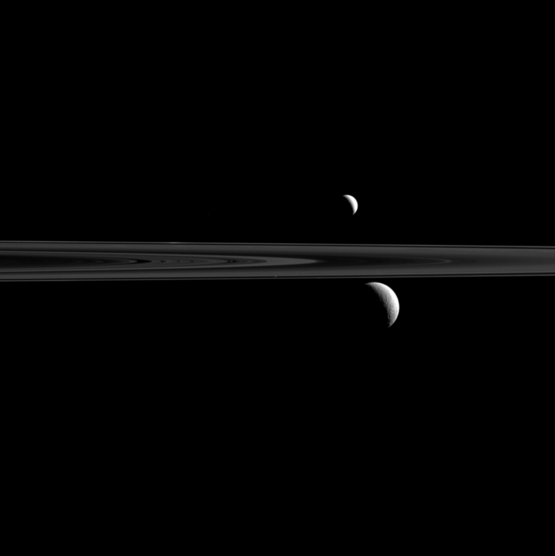
Imagine something that is a hundred times brighter than the sun. And a thousand? And in a billion? Scientists at the beginning of the year discovered the star ASASSN-15lh , which is 570 billion times brighter than our Sun. It is 50 times higher than the brightness of all the stars of the Milky Way.
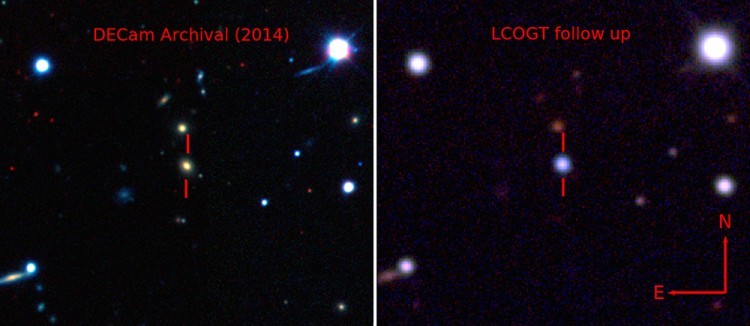
Maternal galaxy ASASSN-15lh before the explosion (left) and supernova (right)
Once upon a time, people in comets saw unkind signs signifying the death of a ruler, crop failure, disease, and war. But Seneca wrote at the very beginning of our era: “I cannot agree that a comet is only a lit fire; rather, it is one of the eternal creations of nature ... A comet has its own place between celestial bodies ..., it describes its path and does not go out, but only leaves. We will not be surprised that the laws of motion of comets have not yet been solved; the time will come when hard work will reveal the truth now hidden to us ... ”
And understanding really came. First, the motion maps of comets, and then the first landing of the spacecraft on the comet. After a ten-year journey to Rosetta, the Fila descent vehicle sat on the comet Churyumov-Gerasimenko . But the last time “Fila” got in touch in July 2015, and we had to say goodbye to him. And in September 2016 - and with the "Rosetta" .
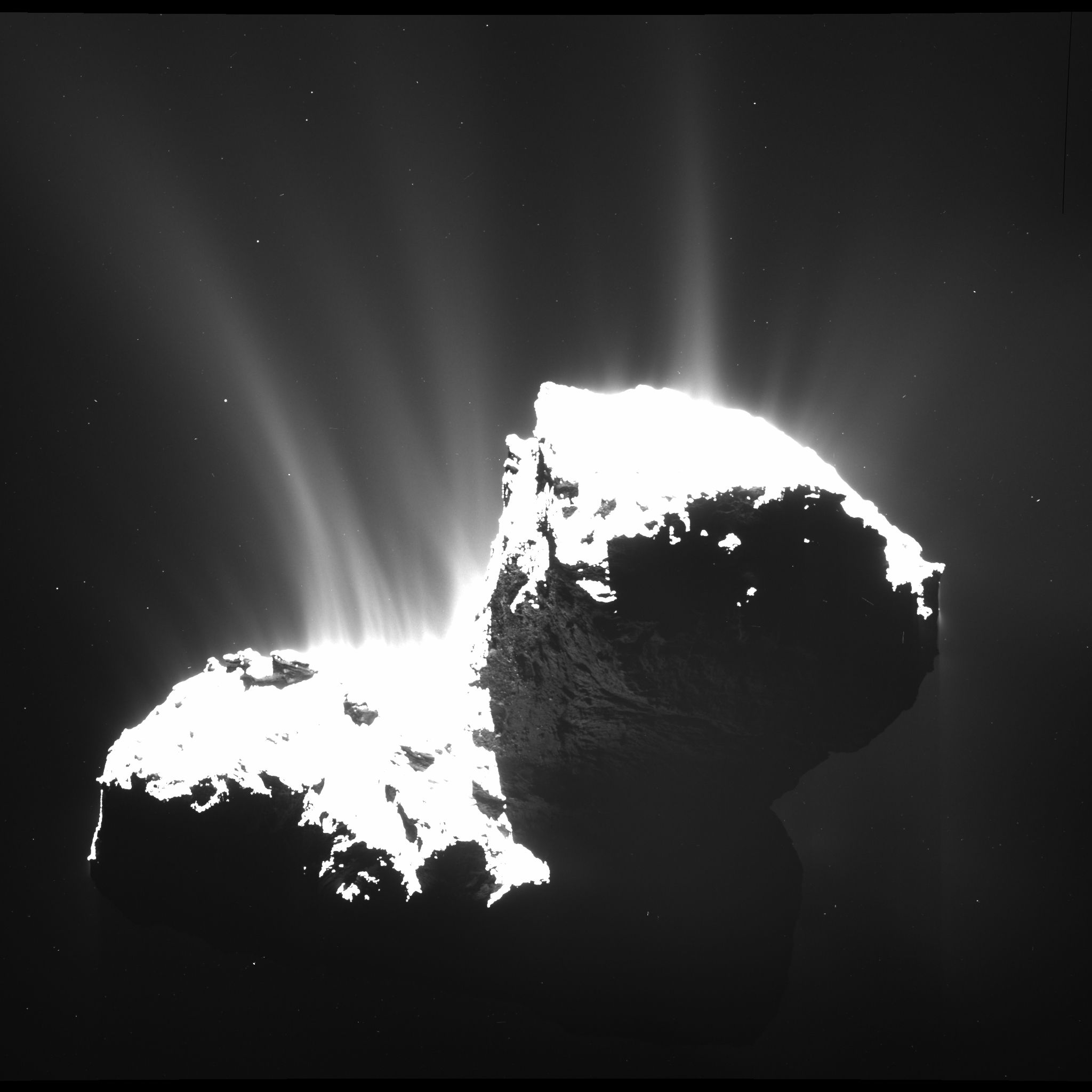
One of the photo of the comet Churyumov-Gerasimenko, obtained from the "Rosetta"
The Chinese lunar rover “Yuytu” has been working on the Earth’s natural satellite since December 2013. At the moment he is the only one who works on the Moon since the completion of the Lunokhod 2 activity in 1973. See photos sent from the moon to Yuytu and the descent vehicle.
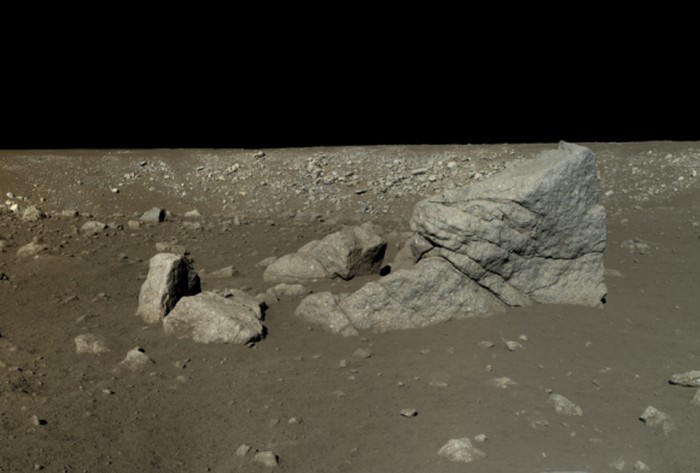
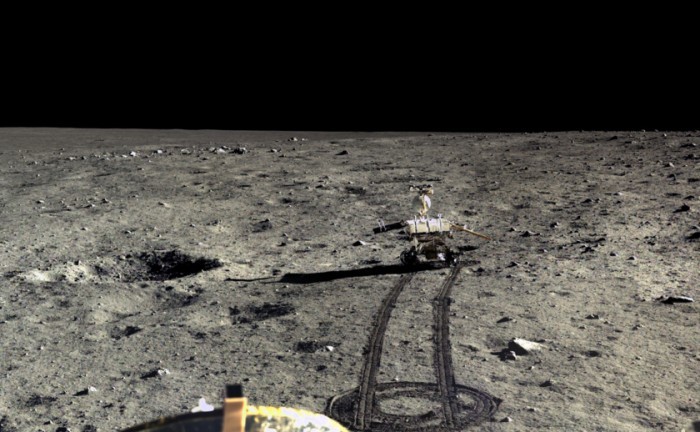
Although Mars is much farther away, everything is much better with photos from it - there are two planet rovers working there - Opportunity and Curiosity . See the 360-degree panorama from this link .
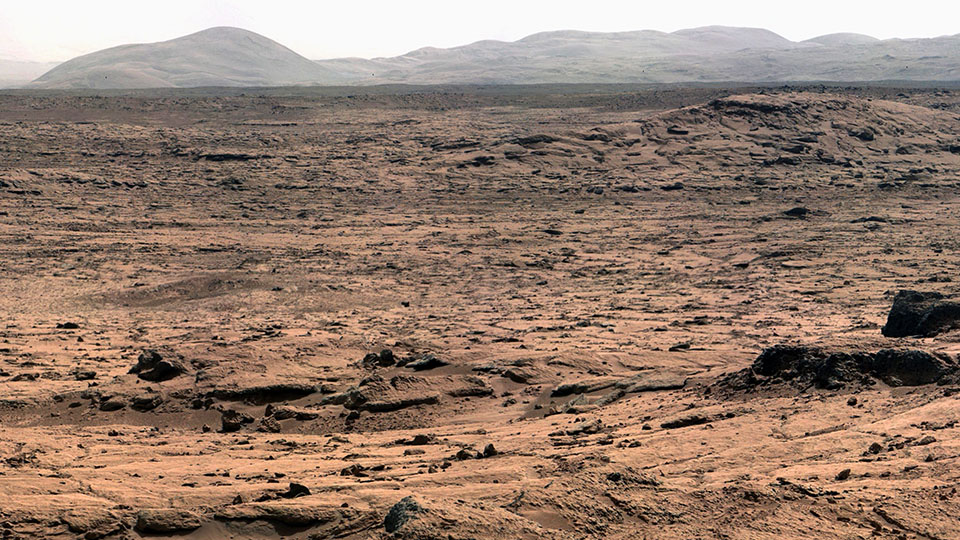
In April, we were all worried about Opportunity stuck on a steep hill, but the rover managed to get out of captivity .
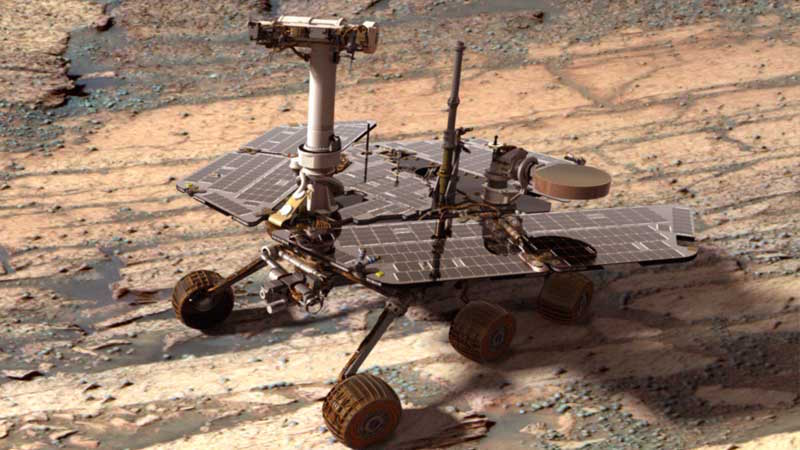
In February in India, a meteorite fell on a private campus engineering campus and killed a bus driver. Three more people were injured, the windows of buildings were damaged.
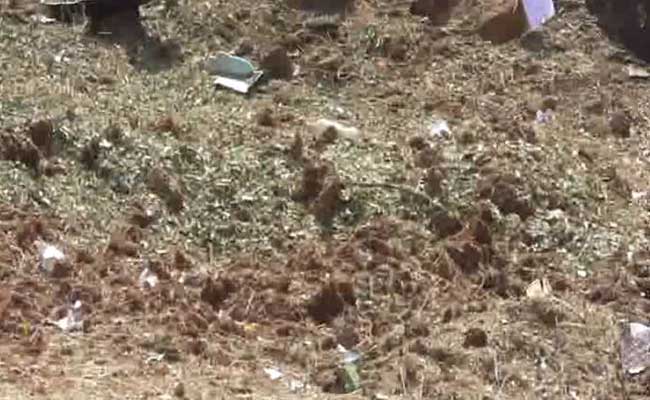
Crater formed at the site of the fall of a celestial body (photo: ndtv )
On March 9, 2016, a solar eclipse occurred. Alaska Airlines specially adjusted the flight plan to please the astronomy lovers on board:
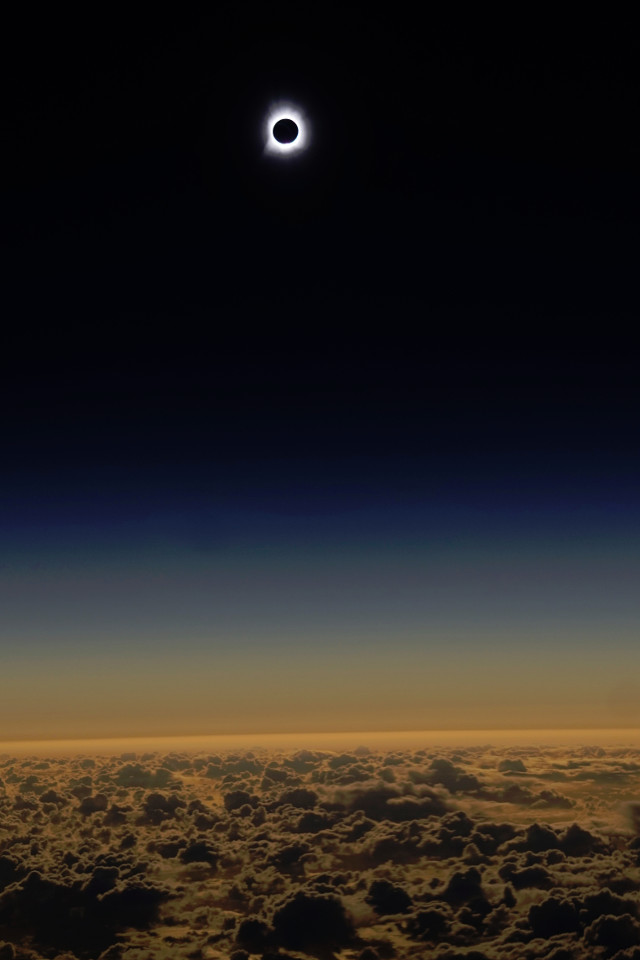
On March 14, at 12 hours 31 minutes, the Proton-M rocket with the EkmoMars-2016 spacecraft successfully launched from the Baikonur cosmodrome. Later, the devices came in contact with the Earth.
In November, the Martian probe Schiaparelli crashed due to an incorrect height determination during descent.

On March 19, the crew of the Russian cosmonauts Alexey Ovchinin and Oleg Skripochka and the American astronaut Jeffrey Williams arrived at the International Space Station. For Ovchinin, this is the first flight, for Skripochka, the second flight, and for Williams, the fourth flight.
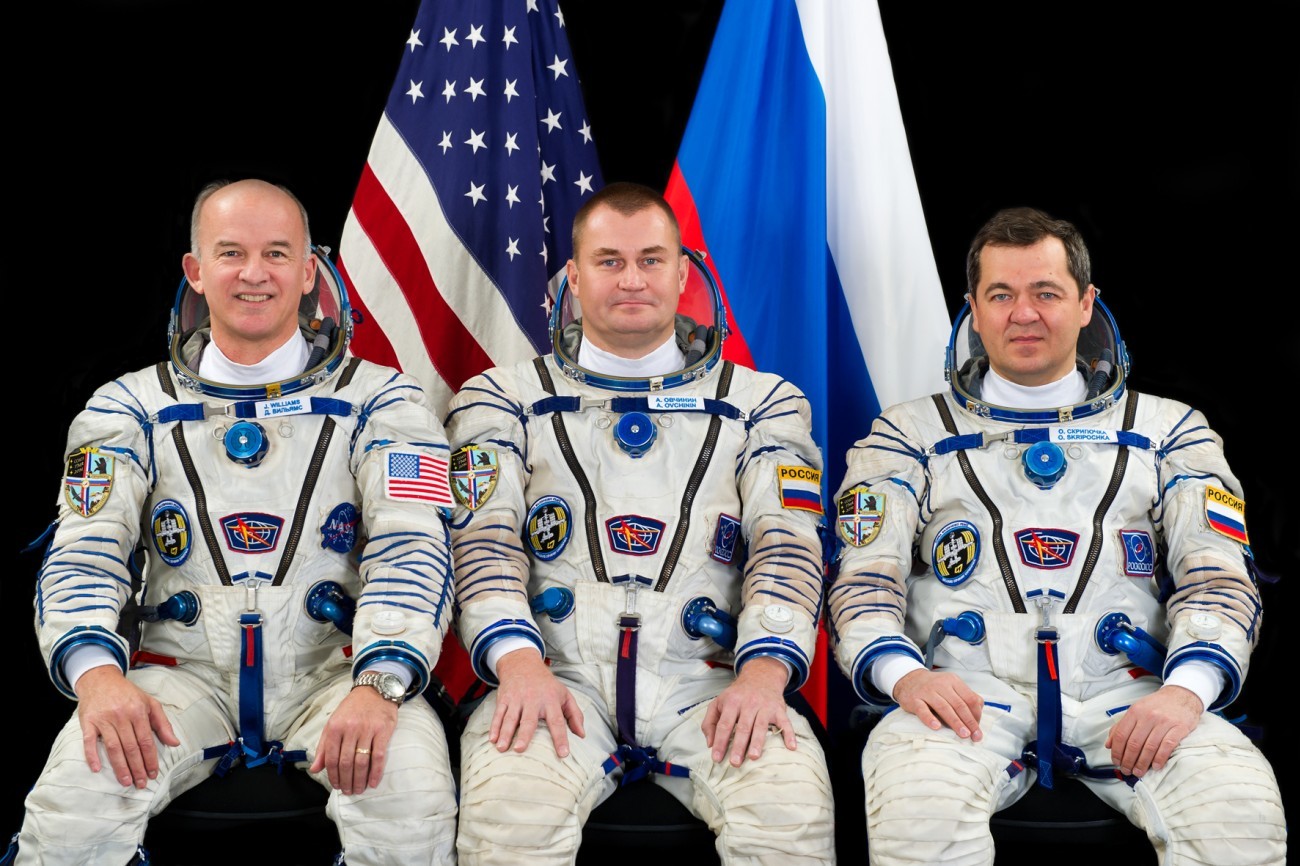
On April 8, Falcon 9 Full Thrust sent a Dragon truck to the International Space Station. The first step successfully sat on the sea platform.
The Kepler space telescope, launched to search for exoplanets, switched to emergency mode in April. The reason is still unknown, but they managed to bring him back to life .

The Japanese probe "Akatsuki" in April 2016 began to transmit data about Venus. The probe had a difficult fate: it was supposed to go into orbit of the planet in 2010, but the exit maneuver was unsuccessful. The probe entered the elliptical orbit only on December 7, 2015.
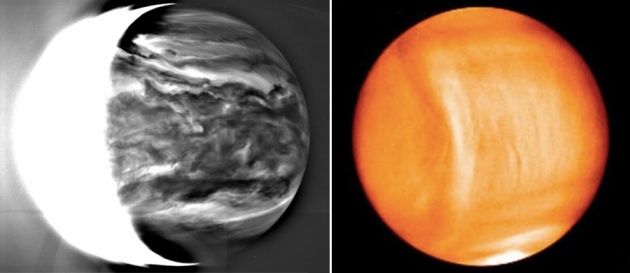
On April 16, the BEAM inflatable module , developed by Bigelow Aerospace, was attached to the ISS. This is an experimental residential module that will be tested for two years. The astronauts will visit the module several times a year and measure indicators to find out how much BEAM protects against radiation and micrometeorites.
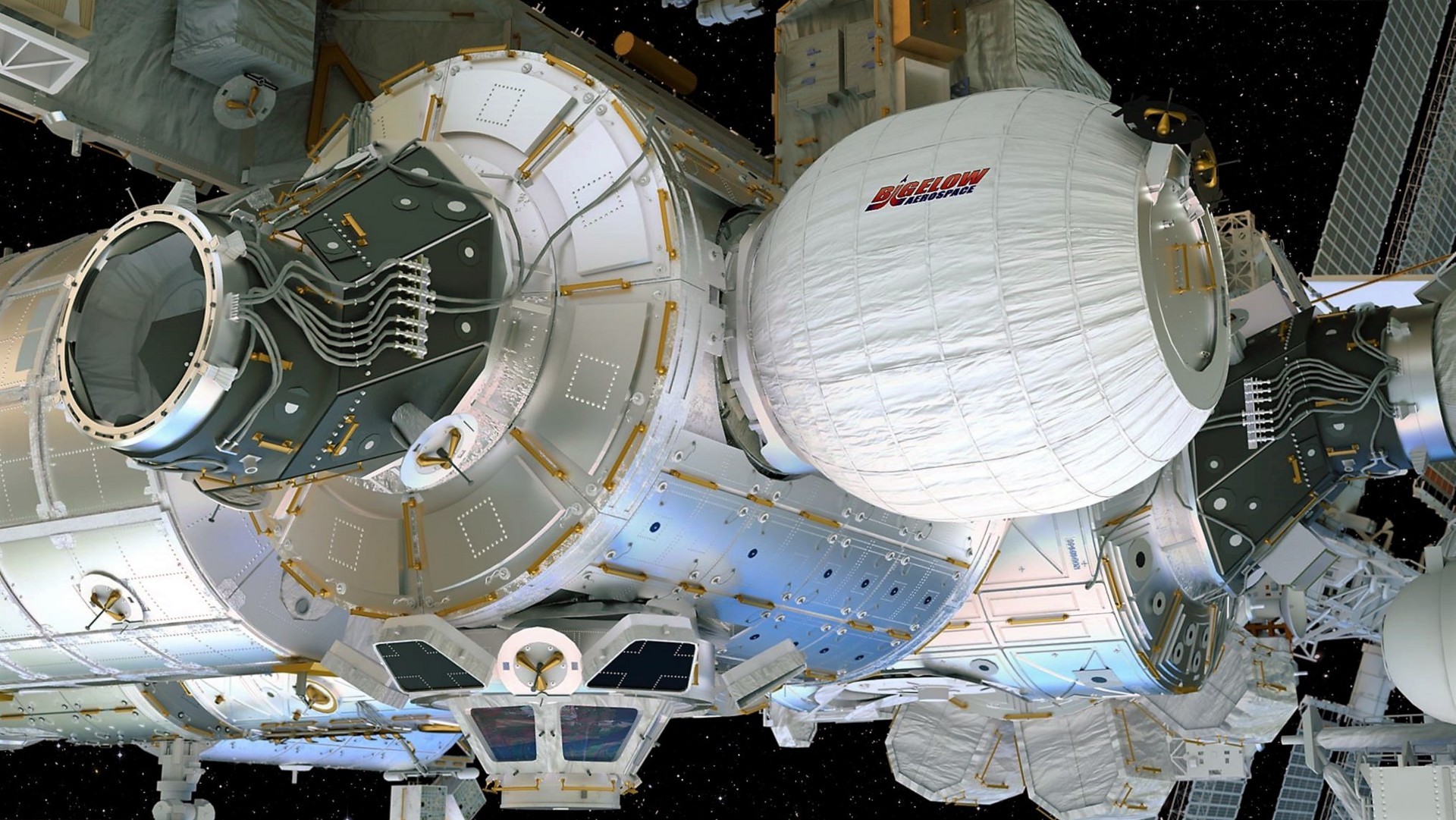
This year, continued research on the impossible engine EmDrive . Back in 2015, the German physicists confirmed the “bucket” performance. This year, the Chinese media wrote that testing of the prototype had already begun in space. There is no exact information as to whether the prototype is in space on the "Tiangun-2".
The engine was not initially taken seriously, but in 2014, NASA took it.

On April 28, the first launch from the Vostochny cosmodrome took place. From the second attempt, the Soyuz-2.1a launch vehicle launched, after which it delivered the Lomonosov, Aist-2D and SamSat-218 (SamSat-218) spacecraft to orbit.
One of the important advantages of the cosmodrome, which was built since 2012, is its location away from the densely populated regions of Russia. Now, the cosmodrome already includes a technical complex of 121 structures, where 1,800 people are preparing missiles before launch. The next launch will have to wait in 2017.

On January 2, three 45-pound metal balls fell on Vietnam. The media blamed Russia first: according to Thanh Nien, the balls could be part of a rocket or spacecraft. On the balls themselves there were no identifying marks.
In Namibia a few years ago was a similar case. Then fell 6-pound ball with a diameter of 35 centimeters.
')
Perhaps this is space debris from orbit. Or fuel tanks?

2016 started well for the UK space program. The second in the history of this country's astronaut visited space. On January 15, 43-year-old Tim Peak and a colleague from the United States spent 6.5 hours in open space, replacing a faulty DC switching unit at the International Space Station. Before opening the airlock, Peak said: “This is so great. This is a moment of pride. ”
Astronaut Tim Peak spent 186 days in orbit - from December 15, 2015 to June 18, 2016. And he was unlucky all the time with calls to his relatives.
Keep a selfie from Tim Peak from outer space.


More Tim Peak showed how to drink instant coffee on the ISS.
At the end of 2015, SpaceX managed to return the first stage of the Falcon 9 launch vehicle to the Earth in a state that allows it to be used a second time, as Ilon Mask assured. But to land is not as interesting as landing a platform on an offshore platform.
In January, this was not possible . The rocket was launched, and they were able to plant it - but with damages, one of the supports broke, which caused the stage to fall and explode.
You yourself can try to land Falcon 9 on the sea platform in this game .
Video landing and fall January 17:
But Ilon Musk did not stop at failure. There were a few more launches, including the launch into orbit of the Thaicom 8 satellite , followed by the landing of the first stage on the deck of the floating spaceport Of Course I Still Love You.

Then from an unexpected angle, an amateur photographer accidentally shot the return of Falcon 9.
In September, the SpaceX Falcon 9 rocket exploded on the launch pad. And we tried to understand why this happened.

Continued his journey with Ceres probe Dawn. On July 1, 2016, NASA decided not to send a probe further to the asteroid Adeon . The main mission at that time was completed, but the probe also did not break on the surface of the planetoid Ceres.
Read the mission details and watch a video of the Dawn probe flying above the Ceres planetoid, made up of high-resolution photos. Color roller - planetoid shown after processing in a graphic editor. On the video you can look at large craters and mountains. Photos for the video were taken at an altitude of 1,450 kilometers from the surface from August to October 2015.
By March 2016, the probe had investigated Ceres for a year .
Another spacecraft that gave scientists a mass of materials for research - New Horizons. In January 2016, thanks to the apparatus , water ice was found on the surface of Pluto. Below you see a NASA map that shows the placement of ice on the surface of the planet.
A few months later, experts, studying the relationship of Pluto and Charon, made the assumption that there could be a liquid ocean beneath the ice.
This link provides even more detailed photos of Pluto, and here is a snapshot of a cryovolcano.

On January 20, the Soyuz 2.1a rocket was unpacked at the Vostochny cosmodrome. For launch from the Vostochny launch site, the launch vehicle was finalized. On April 28, 2016, Soyuz-2.1a successfully launched three satellites into orbit.
Great photos are on this link .


Since 2012, NASA has been paying SpaceX for delivering cargo to the International Space Station. In the future, Dragon will begin to send people into orbit, but this requires a lot of tests. The company Ilona Mask successfully tested parachutes for a manned capsule, as well as the SuperDraco system for a soft landing of the capsule.

Blue Origin, which belongs to Amazon founder Jeff Bezos, tried to keep up with SpaceX and, on January 22, re-launched the New Shepard suborbital carrier. The device rose to 101.7 kilometers, which is more than a kilometer above the previous result. New Shepard raised a suborbital ship, which Blue Origin is developing for space tourism.
The most interesting thing is that in this case the rocket was really reusable. Later, Blue Origin specialists modeled the accident in order to find out whether the emergency evacuation system for the crew and passengers would work, and also to test for a parachute failure .
And here you can read and look at the excursion in Blue Origin.
In April, the reusable ship Blue Origin took off for the third time and sat down.

Hubble has already given us an incredible amount of beautiful photos, and scientists - data for space exploration. Below is a photo of the cluster-like Trumpler 14 cluster, which contains some of the brightest stars in the Milky Way. Blue and white stars in several million years will turn into supernovae.
And can you find all three Saturn's moons from the first? Or see only two? Without a hint, the task is very difficult, even if you look at the photo in high resolution . But there is a hint .
This photograph was taken by the Cassini spacecraft. By the way, above the rings we see Enceladus, under the surface of which in the southern hemisphere is the ocean. Perhaps even habitable .

Imagine something that is a hundred times brighter than the sun. And a thousand? And in a billion? Scientists at the beginning of the year discovered the star ASASSN-15lh , which is 570 billion times brighter than our Sun. It is 50 times higher than the brightness of all the stars of the Milky Way.

Maternal galaxy ASASSN-15lh before the explosion (left) and supernova (right)
Once upon a time, people in comets saw unkind signs signifying the death of a ruler, crop failure, disease, and war. But Seneca wrote at the very beginning of our era: “I cannot agree that a comet is only a lit fire; rather, it is one of the eternal creations of nature ... A comet has its own place between celestial bodies ..., it describes its path and does not go out, but only leaves. We will not be surprised that the laws of motion of comets have not yet been solved; the time will come when hard work will reveal the truth now hidden to us ... ”
And understanding really came. First, the motion maps of comets, and then the first landing of the spacecraft on the comet. After a ten-year journey to Rosetta, the Fila descent vehicle sat on the comet Churyumov-Gerasimenko . But the last time “Fila” got in touch in July 2015, and we had to say goodbye to him. And in September 2016 - and with the "Rosetta" .

One of the photo of the comet Churyumov-Gerasimenko, obtained from the "Rosetta"
The Chinese lunar rover “Yuytu” has been working on the Earth’s natural satellite since December 2013. At the moment he is the only one who works on the Moon since the completion of the Lunokhod 2 activity in 1973. See photos sent from the moon to Yuytu and the descent vehicle.


Although Mars is much farther away, everything is much better with photos from it - there are two planet rovers working there - Opportunity and Curiosity . See the 360-degree panorama from this link .

In April, we were all worried about Opportunity stuck on a steep hill, but the rover managed to get out of captivity .

In February in India, a meteorite fell on a private campus engineering campus and killed a bus driver. Three more people were injured, the windows of buildings were damaged.

Crater formed at the site of the fall of a celestial body (photo: ndtv )
On March 9, 2016, a solar eclipse occurred. Alaska Airlines specially adjusted the flight plan to please the astronomy lovers on board:
On March 14, at 12 hours 31 minutes, the Proton-M rocket with the EkmoMars-2016 spacecraft successfully launched from the Baikonur cosmodrome. Later, the devices came in contact with the Earth.
In November, the Martian probe Schiaparelli crashed due to an incorrect height determination during descent.

On March 19, the crew of the Russian cosmonauts Alexey Ovchinin and Oleg Skripochka and the American astronaut Jeffrey Williams arrived at the International Space Station. For Ovchinin, this is the first flight, for Skripochka, the second flight, and for Williams, the fourth flight.

On April 8, Falcon 9 Full Thrust sent a Dragon truck to the International Space Station. The first step successfully sat on the sea platform.
The Kepler space telescope, launched to search for exoplanets, switched to emergency mode in April. The reason is still unknown, but they managed to bring him back to life .

The Japanese probe "Akatsuki" in April 2016 began to transmit data about Venus. The probe had a difficult fate: it was supposed to go into orbit of the planet in 2010, but the exit maneuver was unsuccessful. The probe entered the elliptical orbit only on December 7, 2015.

On April 16, the BEAM inflatable module , developed by Bigelow Aerospace, was attached to the ISS. This is an experimental residential module that will be tested for two years. The astronauts will visit the module several times a year and measure indicators to find out how much BEAM protects against radiation and micrometeorites.

This year, continued research on the impossible engine EmDrive . Back in 2015, the German physicists confirmed the “bucket” performance. This year, the Chinese media wrote that testing of the prototype had already begun in space. There is no exact information as to whether the prototype is in space on the "Tiangun-2".
The engine was not initially taken seriously, but in 2014, NASA took it.

On April 28, the first launch from the Vostochny cosmodrome took place. From the second attempt, the Soyuz-2.1a launch vehicle launched, after which it delivered the Lomonosov, Aist-2D and SamSat-218 (SamSat-218) spacecraft to orbit.
One of the important advantages of the cosmodrome, which was built since 2012, is its location away from the densely populated regions of Russia. Now, the cosmodrome already includes a technical complex of 121 structures, where 1,800 people are preparing missiles before launch. The next launch will have to wait in 2017.

Source: https://habr.com/ru/post/400297/
All Articles